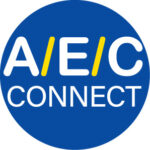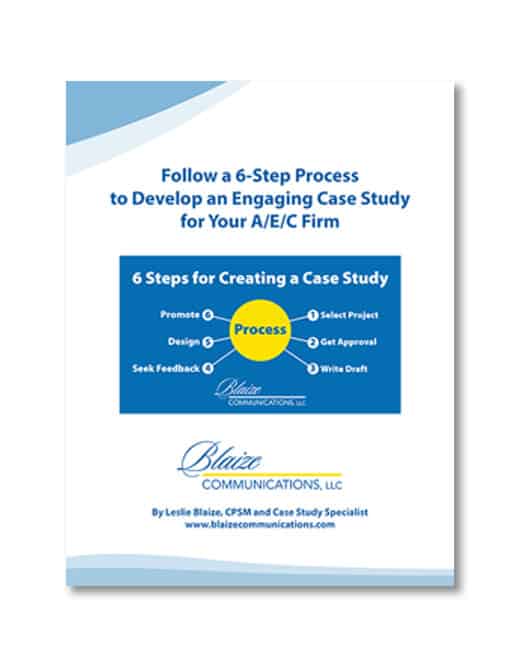When a recruit considers joining an Architecture/Engineering/Construction firm, they want to know what it’ll be like to work there. What’s the culture really like, and will they fit in?
“Your company must demonstrate that you’re the real deal if you want to become a destination for talent while retaining the talent you have. And you need to back it up with actions, policies, and culture,” says Scott D. Butcher, FSMPS, CPSM, in the ENR article “Trouble Recruiting Talent? It Could Be Your Employer Brand.”
He adds, “Only when you can articulate these actions, policies, and culture in your marketing messaging, backed by authenticity and employee promoters, will you have a strong employer brand.”
Encourage Employees to Tell Their Stories
One way to show how a company lives its brand is by creating employee-focused case studies. Through these narratives, employees tell their stories of what it’s like to work at a company.
Many firms may have brief videos or a paragraph or two that highlight an employee’s experience. These approaches offer some insights, but an extended case study provides more details and context.
What do recruits discover when they visit your website? Do you have compelling career pages that reveal your company’s values? Are diverse employees represented? Will website visitors see women and people of color featured?
Employee-focused case studies provide valuable information about a company. Follow this six-step process for developing these success stories. They’re one more way to form a human connection with potential employees.
Step One: Select Potential Employees to Feature
First, determine whom to feature in an employee-focused case study. Upper management and human resource leaders can identify the strategic hires they seek. That could include professionals with different levels of experience.
Consider selecting employees who represent needed positions in key market areas. Also look for individuals who reflect a firm’s commitment to a diverse workforce. Would their stories align with your firm’s diversity, equity, and inclusion (DEI) goals?
Key employees may agree to share their experiences in a success story format, which would allow them to be role models for others.
Step Two: Get Permission From Employee
The next step is to ask selected employees if they’d be willing to be featured in a success story. It could be a video interview or a written narrative of one to three pages.
The employee would approve the final narrative before it’s published. Throughout the process, keep the employee informed and explain how the case study will be used.
The featured employee would build their brand as a successful team player. They would be required to participate in a 30- to 45-minute interview and then approve the draft.
Step Three: Write the Case Study
Include your in-house marketers in the planning process. Will they be able to write the employee-focused success story, or will you need a qualified freelance writer?
Before the interview, develop and share questions with the key company contact and the employee.
The case study should include the employee’s background. Encourage the featured individual to share their challenges. How did the firm encourage their success and provide growth opportunities? Have they felt accepted and empowered?
The employee can discuss the company’s values and culture. They may contrast their current job with previous jobs.
Here are some additional questions:
- What skills have you learned in your position?
- Are there opportunities for advancement?
- Are you comfortable offering your views about challenging issues?
- Does the firm offer accommodations for disabilities?
- Do you enjoy working at your firm?
- What would you tell recruits who are considering joining your firm?
Step Four: Get Feedback and Approval
Once your writer interviews the employee and prepares a draft, the designated contact person and employee should review it for accuracy.
If needed, the writer can ask a DEI advisor to review the narrative to make sure it avoids biases.
Case studies typically are two pages long but can be longer if they use many photos and graphs. At the end of the case study, you can share your firm’s information, logo, and contact information related to job openings.
Step Five: Design the Case Study
A professionally designed case study helps capture a reader’s attention. Elements will include the employee’s photo, at least one callout quote, and photos that help tell the story.
You can also include a sidebar to highlight critical elements not contained in the main text. In addition, you can list an employee’s credentials, key projects, or even hobbies to add some interest.
Step Six: Promote the Case Study
Once you have a completed case study, brainstorm ways to use it. Human resources personnel and others involved in the hiring process could send an employee-focused case study to recruits. You could link to it from your company’s career page or use the information in a blog post.
Here are some other ideas:
- Distribute case studies at career fairs
- Use key elements in social media posts
- Include the case study in internal newsletters
- Use the case study as the basis for a video script
Encourage Human Connections
Use employee case studies to create a longer-lasting human connection with recruits, employees, and other stakeholders. Authentic stories can make an impact. They can help a future employee better understand what it might be like to work at a firm.
Have Questions?
Do you want to know more about creating an employee-focused case study? Subscribe to A/E/C Connect to learn more about this marketing tool and related issues. If you have a challenge or question you’d like me to address, post it in the comments section below or contact me at blaizecommunications@gmail.com.



